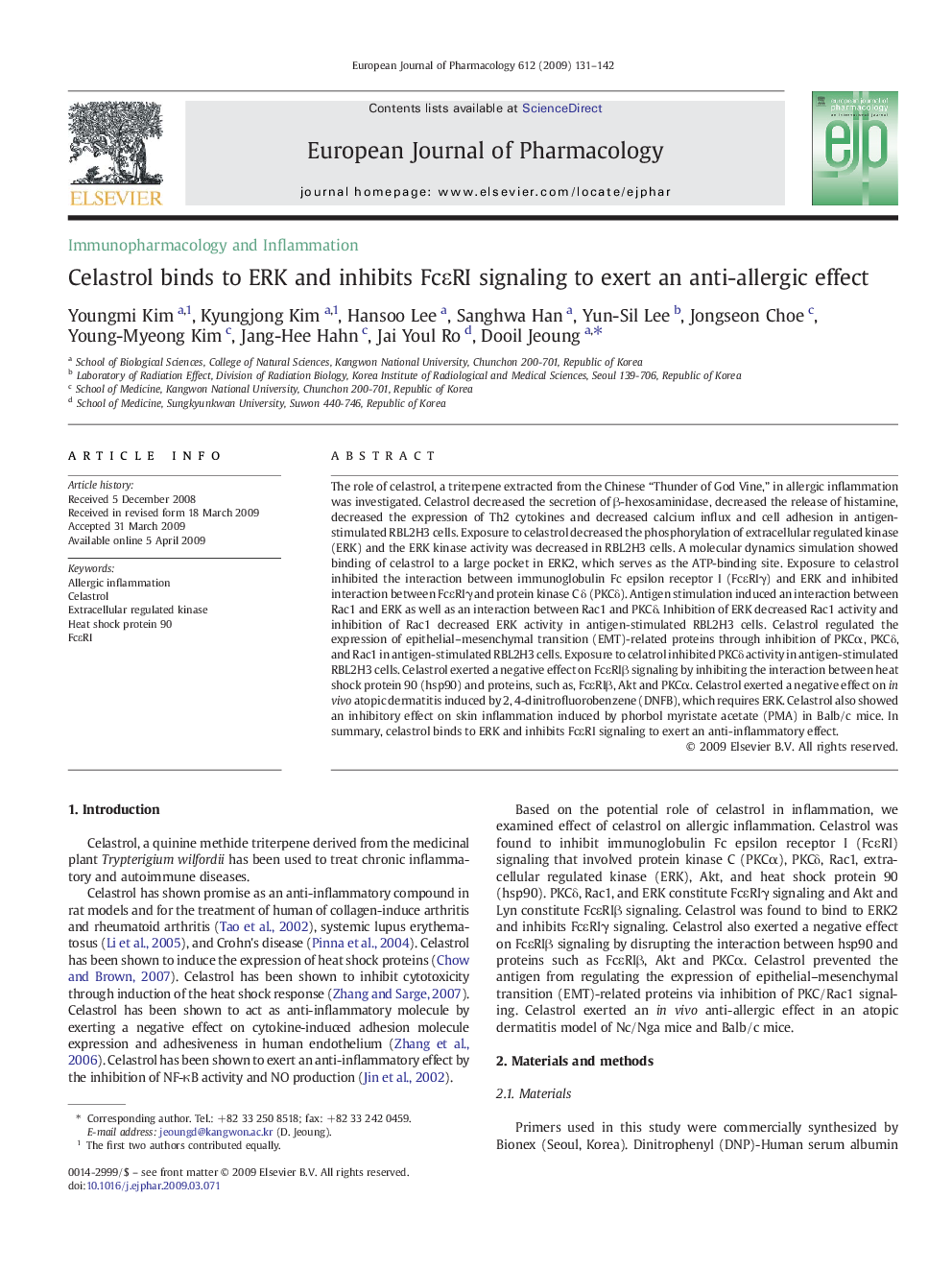| Article ID | Journal | Published Year | Pages | File Type |
|---|---|---|---|---|
| 2534261 | European Journal of Pharmacology | 2009 | 12 Pages |
The role of celastrol, a triterpene extracted from the Chinese “Thunder of God Vine,” in allergic inflammation was investigated. Celastrol decreased the secretion of β-hexosaminidase, decreased the release of histamine, decreased the expression of Th2 cytokines and decreased calcium influx and cell adhesion in antigen-stimulated RBL2H3 cells. Exposure to celastrol decreased the phosphorylation of extracellular regulated kinase (ERK) and the ERK kinase activity was decreased in RBL2H3 cells. A molecular dynamics simulation showed binding of celastrol to a large pocket in ERK2, which serves as the ATP-binding site. Exposure to celastrol inhibited the interaction between immunoglobulin Fc epsilon receptor I (FcεRIγ) and ERK and inhibited interaction between FcεRIγ and protein kinase C δ (PKCδ). Antigen stimulation induced an interaction between Rac1 and ERK as well as an interaction between Rac1 and PKCδ. Inhibition of ERK decreased Rac1 activity and inhibition of Rac1 decreased ERK activity in antigen-stimulated RBL2H3 cells. Celastrol regulated the expression of epithelial–mesenchymal transition (EMT)-related proteins through inhibition of PKCα, PKCδ, and Rac1 in antigen-stimulated RBL2H3 cells. Exposure to celatrol inhibited PKCδ activity in antigen-stimulated RBL2H3 cells. Celastrol exerted a negative effect on FcεRIβ signaling by inhibiting the interaction between heat shock protein 90 (hsp90) and proteins, such as, FcεRIβ, Akt and PKCα. Celastrol exerted a negative effect on in vivo atopic dermatitis induced by 2, 4-dinitrofluorobenzene (DNFB), which requires ERK. Celastrol also showed an inhibitory effect on skin inflammation induced by phorbol myristate acetate (PMA) in Balb/c mice. In summary, celastrol binds to ERK and inhibits FcεRI signaling to exert an anti-inflammatory effect.
